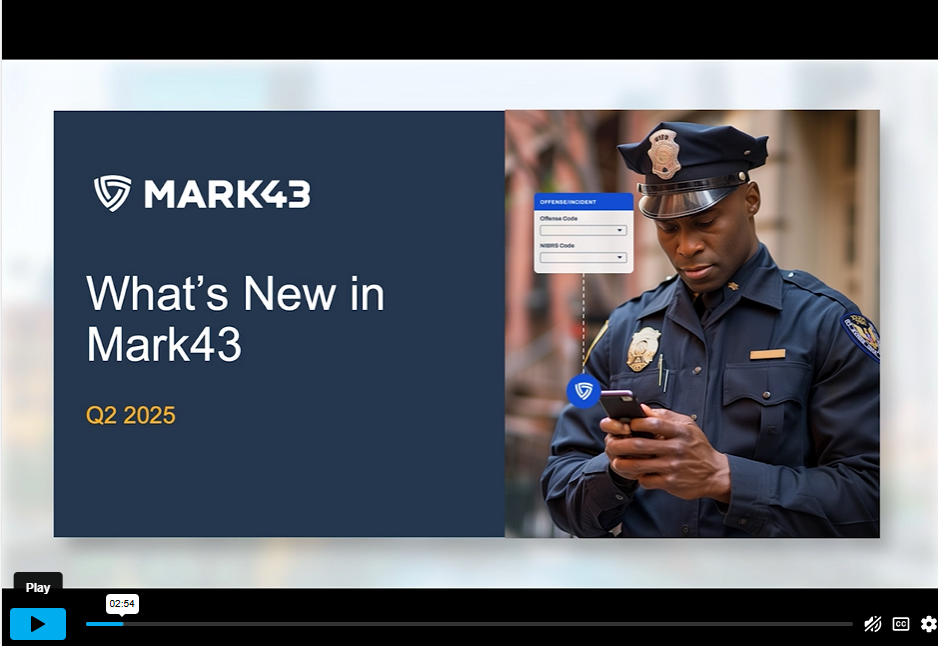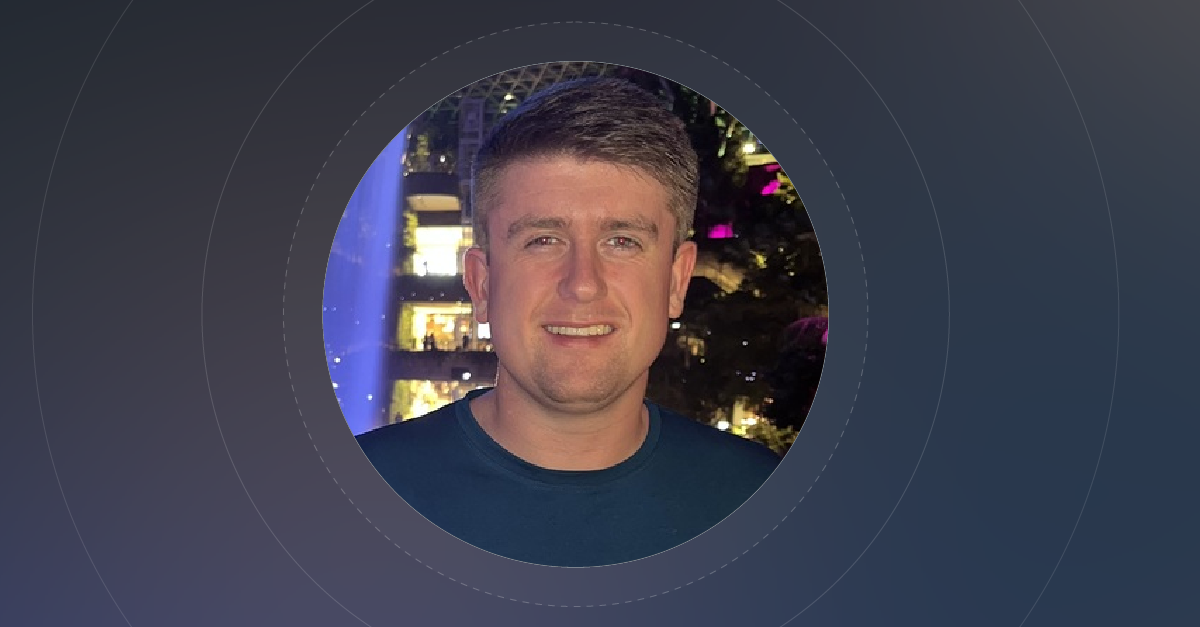By: Authority Magazine Editorial Staff

Follow through matters. Come back and inspect, finesse, measure and ensure alignment to mission critical goals: Define what kind of goals you’re setting (realistic or reach) and the cadence of review. It can be monthly or quarterly, however be consistent. If you set a big financial target, you need to think how we actually get there by milestone, by date, by benchmark.
As a part of our series about the five things you need to successfully manage a large team, I had the pleasure of interviewing Robert “Bob” Hughes.
Robert “Bob” Hughes, CEO of Mark43, the leading cloud-native public safety technology company. Hughes brings 30 years of senior management experience to his new role. He served as President of Everbridge and spent nearly two decades in leadership positions at Akamai Technologies, including as President and Executive Vice President.
Thank you so much for doing this with us! What is your “backstory”?
Itis my pleasure!
Prior to joining Mark43 as CEO a few months ago, I spent the last 30 years at different mission-driven technology companies. I served as President of Everbridge and spent nearly twenty years in leadership positions at Akamai Technologies, including as President and Executive Vice President.
I first met the Mark43 co-founders a few years ago and was blown away by what they had built plus the potential for growth and impact. Throughout my career I’ve worked with first responders and emergency personnel. I have seen — firsthand — how technology transforms the services they deliver and directly benefits those being served. The technology that Mark43 was bringing to the public safety ecosystem was transformative. First responders deserve the best software and tools.
When I re-met the Mark43 team last year after being approached about the CEO opportunity, it was serendipity. The timing, the mission, the stage of growth were all in my sweet spot. After some very productive months of conversations, I came on board.
Now, my focus is taking Mark43 to the next level and the timing and need could not be any better. We are all about bringing the best products to market for as many customers as possible so that we can deliver on our central mission: improving, and ultimately transforming, how public safety agencies leverage technology to help keep people safe.
Can you share the most interesting story that happened to you since you started your career?
The word “interesting” often has a positive connotation; that isn’t always the case. For me, it’s impactful and formative. What comes to mind is the murder of our co-founder at Akamai on 9/11. Danny Lewin co-founded Akamai in the late ’90s to make the internet faster and more efficient. And at 31 was the first person killed in the horrific attacks on American Airlines Flight 11. He was a hero, a brilliant mathematician and a pioneer. He was an inspiration to everyone he met.
This was a brutal and extreme moment. There was trauma across the company — and across the country. We had to navigate the loss of our founder while keeping a company running. We had to put our customers first, because using the internet was the way to communicate. At that time, websites that were staying online were Akamai customers. While we were grieving, we were also signing up and integrating new customers so they too could stay online. There was an enormous gravitas to it all and it made us reflect on just how big of an idea we were working on. The internet as we know it today simply didn’t exist then. It defined us and defined how I approached my career. Mission-driven couldn’t be an afterthought, it had to be front and center. That idea of being mission-driven is now part of my DNA.
Can you share a story about the funniest mistake you made when you were first starting? Can you tell us what lesson you learned from that?
As a sales representative, I was often in front of large groups of prospects. One instance serves as a cautionary tale and a reminder to always have a check-list (and check it twice) before any sort of demo.
The scene: a technology demonstration in front of a Tier One prospect. Our team was pitching the 200 employees sitting in front of us. Right before we began, we had to reboot our computer. No big deal, I thought. Suddenly, and unexpectedly, the reboot brought up the competitors’ logo on the start-up screen. A collective groan (and some boos!) followed. While the technology we were demo-ing had nothing to do with the hardware, it sent the wrong message and was a definite miss.
I remind my sales teams that it’s easy to be hyper-focused on the nuts and bolts of the deck or the demo, but if you aren’t looking at the big picture, you may end up with boos — and you can lose the crowd and the deal.
Ok, let’s jump to the core of our interview. Most times when people quit their jobs they actually “quit their managers”. What are your thoughts on the best way to retain great talent today?
A great question that rings true. When you identify an employee as ‘high potential,’ it is important to understand what that person’s short-term and long-term goals are. This includes professionally, but also personally. Where do they want to live, where are they trying to go, how do they reboot, how do they handle adversity, how do they make decisions?
Then, working with that employee, try to round out their skillset. Show you’re invested in them, but also make sure they have a safety net. This isn’t survival of the fittest or sink or swim, it’s a strategic plan to show your investment and belief in that employee’s growth and potential and remember they excelled in their prior role so you must be there to support them knowing the new role or assignment is a stretch. We are all looking for learners that possess the traits to lead.
How do you synchronize large teams to effectively work together?
For large teams, it’s key to identify the top Mission Critical Objectives. At the end of the day– in the long-term–what do we measure ourselves against to determine success? Everyone needs to be aligned around these fundamental concepts. And then we must clarify: What are the smaller steps for each team to achieve those goals? How does that play departmentally? And how is there a system created that ensures accountability?
People need to be bought in — and not just the leaders.
Here is the main question of our discussion. Based on your personal experience, what are the “5 Things You Need To Know To Successfully Manage a Team”. (Please share a story or example for each, Ideally an example from your experience)
- Identify talent: Finding talent is itself a talent. It requires time and patience to find the best candidates. To start, it’s critical to understand the journey of how that person got in front of me. I prioritize handling adversity and journey over pedigree. I look for people who have unconventional paths which often means creativity and tenacity. I’ve hired top executives who never graduated college. I want managers who understand that team building is not an occasional act but an ongoing mindset that carries capable leaders to the front. I attended Northeastern University because I needed to work to support my education and figure out what I wanted to do. I’ve found that students who seek out employment throughout their college experience, or balance a team sport or activity while in school have a different — and valuable — vantage point when entering the workforce. They are multidimensional, know how to be part of a team and have grit.
- Enable talent: Give your talent the tools they need to succeed. Leaders are only as good as the talent they have on their team. Leadership cannot be a solo act; it’s collective. While the specific actions to support employees are role dependent, go back to the basics — regular direct coaching and feedback. For my customer success team: how are we pushing them and holding them accountable? Is there a curriculum that combines written and oral competence? For a sales rep — perhaps they can command a room but do they have the technical chops? Find areas for continued growth. I have to model this growth or it’s bogus. Authenticity matters. We all want to get better and will do so when someone has tailored that support for us.
- Give that talent enough room to run: Ask questions, don’t give the answers. I’ve worked with brilliant engineers, and 10 times out of 10, if you articulate the problem you’ll get a better solution than what you think you want. Be clear: “Here’s the customer problem.” If you tell an engineer that you need a tool that does XYZ, they’ll build me what i want, but you’re limiting them by putting them in a box. Expect problem solving to be messy. Create an atmosphere that can bring together unlikely partners to solve a problem so multiple perspectives are introduced and challenged. Don’t be afraid of conflict. I support and promote what I call healthy tension on teams. Create a path so the best ideas win. And allow the time to ideate, generate, prototype, revise, improve, and shape meaningful solutions. And most importantly fail fast.
- Get out of the way (but not completely): Remain accessible and serve as a sounding board when approached. Reveal what you don’t know. That may appear vulnerable when in fact it’s being real and knowing that you have the talent onboard to deliver the goods. This conveys that we are truly always learning. When you make yourself open you’ll often be surprised.
- Follow through matters. Come back and inspect, finesse, measure and ensure alignment to mission critical goals: Define what kind of goals you’re setting (realistic or reach) and the cadence of review. It can be monthly or quarterly, however be consistent. If you set a big financial target, you need to think how we actually get there by milestone, by date, by benchmark.
What advice would you give to other CEOs or founders to help their employees to thrive?
I’m a big believer in skip-level meetings. Don’t meet with just the c-suite team; meet with their direct reports on a semi-regular basis, meet with the front line. By making yourself accessible and listening closely, people will get energized and believe they can have a true impact on the company.
As CEO, you will learn how messages are resonating and validate or invalidate assumptions as well as identify new ideas to pursue. By meeting with direct reports as well as their respective team members, you also quickly learn which managers are good at building strong teams, which leaders can do more, and where there are gaps.
This also helps your direct reports to build capacity and has an added bonus of weeding out ineffective managers. By not getting stuck on titles and remaining close to the frontlines, CEOs and founders can have a larger sample size of information to cull from when they’re making important decisions. Hear it, act on it, value the team you have pulled together.
You are a person of great influence. If you could inspire a movement that would bring the most amount of good to the most amount of people, what would that be? You never know what your idea can trigger. :-)
Being with Mark43 is no accident for me. This work aligns with the possibility of reshaping how we connect, collaborate, innovate, and thrive. Regardless of the movement, it must be grounded in mission and honesty. We need a way to not just hear ourselves talk, but actually listen to each other to construct healthy, vibrant communities. We may not have all the ideas, however they are all out there and if we do a better job of gathering the knowledge and input then whatever the movement is that comes, will have the greatest impact.
Can you please give us your favorite “Life Lesson Quote”? Can you share how that was relevant to you in your life?
“Opportunity is missed by most people because it is dressed in overalls and looks like work.” — Thomas Edison
There was a clear ethos in my family — we dive in, we figure out (quickly) how to swim, we make sure no one else is drowning, and we get the job done. I learned through numerous experiences that I was not made for the backseat. I am a driver. I have a knack for seeing both the macro and the micro and this translates into clear cut goals and pathways that illuminate a way forward. To be clear, I can make mistakes, in fact, I must. That’s how we function best — in environments that welcome the miss so we can methodically get closer to the mark.
With a mission-driven approach, I have an eye on where we are headed while leaving ample room for divergent ways to get there. We have seen disruptors that literally reshape how we do business from travel to how we learn. The tech world lives in disruption so we must be able to see the target and build backwards with an eye for innovation and always doing better.
How can our readers further follow your work online?
You can follow my work and updates on my personal LinkedIn and through Mark43’s LinkedIn.
Thank you for these great insights, and for the time you spent on this. We wish you continued success.
Original Story: https://medium.com/authority-magazine/bob-hughes-of-mark43-on-5-things-you-need-to-know-to-successfully-manage-a-team-4917cc5d3b52








